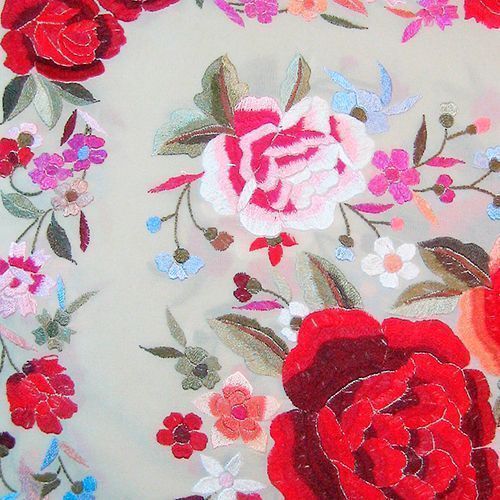Flamenco fashion blog
The embroidered shawl… where does it come from?
The embroidered shawl, traditionally known as “Manila Shawl”, is a typical garment among elegant and distinguished women. This name was originally taken from the city of Manila, capital of the Philippines, which was once a Spanish colony. At that time they brought from Spain to the east a multitude of products in our galleons.
The shawl had a great reception in all our country, but especially in Seville, where it became an indispensable piece to have class among flamenco singers and flamenco dancers. Little by little, it became a more common everyday garment. It also had a great reception in Mexico, where as a typical garment they had the “Mexican rebozo”, similar to the Manila shawl.
These two territories were undoubtedly the impellers of the Manila shawl, since the main sea route from Manila necessarily passed through Veracruz (Mexico) to Seville (Spain). However, the origin of the shawl does not come from Manila, but from China, where they were made in silk and they were embroidered by hand with typical Chinese motifs such as dragons and pagodas.
Because of the differences in taste in Spain and to facilitate later its commercialization here, these reasons were replaced by something more ours, such as flowers and birds, being the rose the one that has always had more acceptance.
The embroidery and the lattice of the fringe, works that have always been necessary to do by hand, are responsible for the high cost of these items, hence they are considered high style, elegance and luxury items. Originally they were made without fringe, and It was in Seville where the fringe was added to further enhance the style of the Manila shawl, thus becoming the shawl we know today. It was an outstanding garment reserved for the ladies of the high society, which little by little It was spreading among the middle classes and became a very everyday garment. Later its use was as a traditional Spanish garment that brings a touch of elegance and distinction.



